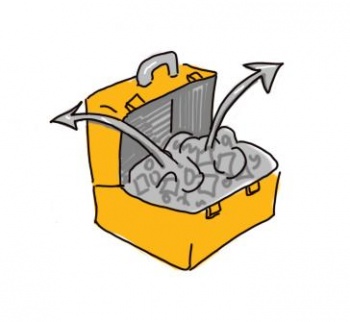EXTAFR100/EXTAFR101/Prior knowledge
| “ | Learning is not the product of teaching. Learning is the product of the activity of the learners. | ” |
| —John Holt | ||
We know, without a doubt, that the single most important attribute that our students bring to class is their prior learning and experience. This knowledge is a special kind of 'luggage' that can either contain essential building blocks to advance toward mastery or be a heavy weight that slows down and impedes learning.
Prior knowledge can help or hinder learning
Help: Using students’ own experiences to generate examples helps learners to make connections and increase both retention and overall knowledge acquisition. Examples include scaffolding learning from earlier classes and experiences.
Hinder: Insufficient, inaccurate, or incorrect information can slow or halt learning. For example, you may have heard of the famous physics education study where scientific misconceptions persist even in Harvard graduates about why we have seasons, or whether a feather dropped from a specific height would fall slower than an anvil that is dropped from the same height.
Even after having learned and been tested, students persist on reverting back to 'intuitive' stances about scientific misconceptions, which ultimately can hinder any potential learning that would need to scaffold onto these basic primary school principles and concepts.
Strategies to determine and acknowledge students’ prior knowledge
We can identify some common misconceptions in our own discipline(s) by considering our students' prior learning, and by connecting new knowledge to prior knowledge.
- Determine your students’ prior learning
- Use diagnostic assessments such as self and peer assessments, brainstorming, and mind maps. Look for patterns amongst the students’ responses.
- Allow space, without pressure, for students to self-identify during these assessments. What they tell you about where they are coming from will be important for your planning and pedagogy.
- Connect new knowledge to prior knowledge
- Be explicit about connections
- Create links between courses
- Create links within courses
- Create links to other disciplines
- Create links to students’ own knowledge and experience
Is there a concept that is often misunderstood in your discipline? Think about why the concept is important, and what the impact/effect is of learners not understanding this concept. Try to explain what might be some factors that can contribute to students' misunderstanding of that concept — where are they coming from? Knowing the root of the misconception will often help navigate undoing it. We will take this thinking through to our first activity in this module.


